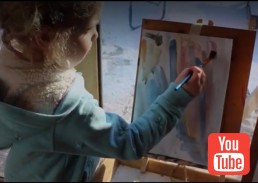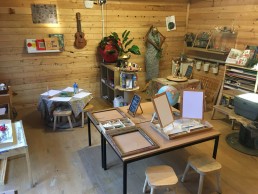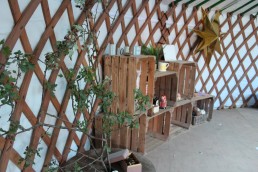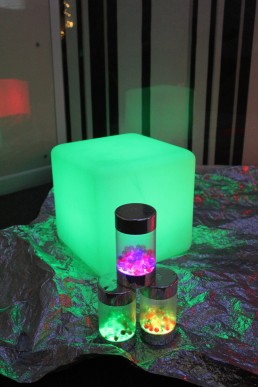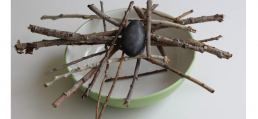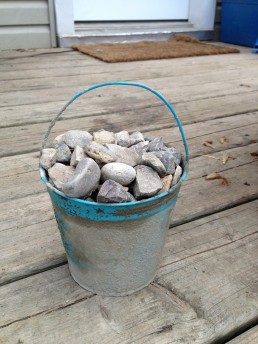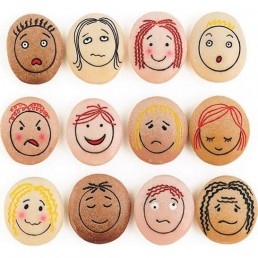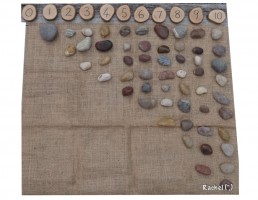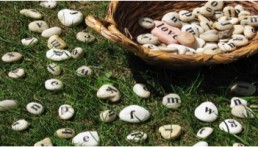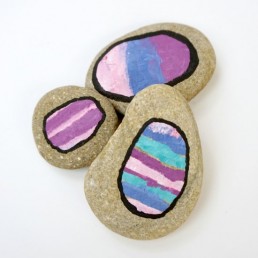Seekers of Meaning
New Video
Over the last few weeks I have been filming the children as they explore the Art Studio. To read more about our Art studio you can go back to last weeks blog.
The children's current shared interest is construction and building houses from clay, bricks, sticks and blocks. Some of that is captured in our brand new video that you can watch here-
https://www.yout ube.com/watch?v=4-59qb9GgdQ
ube.com/watch?v=4-59qb9GgdQ
The Art Studio
Every morning and afternoon our Pre-Schoolers choose where they want to spend their time, between the Yurt/Outdoor Classroom, Forest School or the Art Studio. There is a quaint pebbled path that leads us behind the Yurt, past the new pond and up to this purpose built creative space, but this isn't just any art classroom, we do things a little differently here. http://simonr30.sg-host.com/the-art-room/
Why do we have an Art Studio?
Of course creativity is woven throughout every aspect of our learning at Inspirations, there are mark making tools, paints and clay accessible in all areas, so why do we need an additional separate creative space? The Art Studio, (referred to as an Atelier in the Reggio culture) is so much more than just an Art Room. It is its own separate space for the children to own, re-purpose and re-visit week after week, and is set out to foster self discovery.
100 Languages of Learning
It is a space for smaller groups of children to branch off, be heard, share ideas, and develop the confidence to be leaders of their own research and learning. It is an environment that plays host to books, materials and tools that support the 100 ways of learning with the support of myself as the Atelierista. It is a space where children proceed through their inquiry to reach their hypothesis though guided experiments, mixed media, play, music, light and shadow, sculpture and dramatic play. A space for them to give meaning to, give identity to, and in turn put them selves and their ideas into context within the world they live in.








The walls of the Art Studio are a canvas, a projector screen, an art exhibition and a metaphorical mirror reflecting the evolving learning journey of our children. Through photos and quotes of the children's voice on the wall the children can see where their ideas started, where they are now, and by reading back the children's own words they see that their inputs are recorded, valued and remembered.
It's also important to note that the Atelierista is not an art teacher, rather, an Artist who knows the potential of art materials and children, and the limitless possibilities when these are combined.




Beautiful Mistakes
In the Art Studio the children are not afraid to try new things, because fear of failure doesn't exist. How can it exist in a place where mistakes are simply learning opportunities. A fallen glue pot can become an art project in its self, and a drawing gone wrong can inspire new ideas. One project that stands out began when a child wiped up spilt watercolour paint from the floor with a baby wipe and watched as the colours soaked through the wipe. He then decided to add baby wipes to a canvas, the 'dirty' baby wipes themselves then becoming the art.
Seekers of Meaning
As constant seekers of meaning, our children are making sense of the world around them with everything they do, and our Art studio is one section of our pre-school that fosters this.
This week we will be filming inside the Art Studio to see their explorations brought to life, this short film will be shared on You Tube next week.
- Nathalie
Pre-School at Horsforth
Happy New Year to everyone, it sure has been an eventful start to the year as we continue to tackle a pandemic with 3 inches of snow thrown in to test us. But hope and positivity prevails, and we really valued your responses to our previous blog on the little steps we can all take to create a more sustainable year.
We thought we would start the year of blogs by taking a look at our Pre-School Settings across Horsforth and Adel. Currently our Pre-School bubble at Horsforth has closed, so for those affected we are posting daily activities and zooms for the children, you can find all the information you need on Tapestry.
We start by looking back at 2018- the time we implemented the Reggio Approach into our classrooms, changed our name from Dolphins to Inspirations, and rebuilt our entire Pre-School area. This change meant moving the Toddler Room into the old Pre-School room, opening up a second Baby Room, and building a Yurt, Outdoor Class Room and Art Studio on the patch of un-used grass land behind our nursery.
Our Yurt



Flattening the land for our Mongolian Yurt was quite the task, over the spring months of 2018 the changes were finalised and after calling in help from some of our parents, together with Colin the Yurt was erected in just a couple of days. The Yurt is a unique space and feature at Inspirations that provides just one of many learning areas for our Pre-School children. It is a cosy space to warm up in adverse weather and to eat their meals during winter. The yurt is filled with literacy areas, maths areas, open ended resources and books for reading and researching. See more about our Yurt here- http://simonr30.sg-host.com/our-yurt/
Outdoor Classroom



Our children are predominantly outdoor learners, and our outdoor classroom is a constantly changing space that matches the children's interests and mirrors seasonal changes. Adapting our classroom to match their interests invites our curious young minds to explore and discover, and is the perfect space for them to unleash their creativity.
No Fear of Failure
Throughout our Pre-School areas room Reggio Emilia is of course the guiding principle, and our spaces reflect that. Our Project based approach provides the backbone of their learning, so it is important that our environment and educators support their creative thought process without any fear of failure.
Exciting News
 This January are excited to announce a brand new Room Leader for our Pre-School room. Jennie is an experienced Reggio inspired Early Years Educator who over the course of the last 15 years has worked in Dubai, Japan, Angola and Vietnam and has been to Reggio Emilia three times. We’re very excited that she has joined our team and brings her passion for our pedagogy and supporting children through child- led learning. Her email address is jennie@inspirationsnurseries.co.uk if you would like to get in touch.
This January are excited to announce a brand new Room Leader for our Pre-School room. Jennie is an experienced Reggio inspired Early Years Educator who over the course of the last 15 years has worked in Dubai, Japan, Angola and Vietnam and has been to Reggio Emilia three times. We’re very excited that she has joined our team and brings her passion for our pedagogy and supporting children through child- led learning. Her email address is jennie@inspirationsnurseries.co.uk if you would like to get in touch.
If you’re interested in your child joining our Pre-School over 3’s room please take a look at our website and get in touch with Kayleigh@inspirationsnurseries.co.uk.
 In next weeks blog we will be taking a look at our Pre-School setting over at Adel. In the mean time stay safe in the snow and please do send in any photos you have out exploring the weather. We will select some highlights to share on our social media this weekend.
In next weeks blog we will be taking a look at our Pre-School setting over at Adel. In the mean time stay safe in the snow and please do send in any photos you have out exploring the weather. We will select some highlights to share on our social media this weekend.
"We value space to create a handsome environment and its potential to inspire social, affective and cognitive learning. The space is an aquarium that mirrors the ideas and values of the people who live in it" -Loris Malaguzzi
- Nathalie
Learning through Light
The Reggio approach (as outlined in our previous blog) puts children at the centre of their own learning. The ethos is based around a hands on approach to learning, with art, materials, and loose parts used to create learning opportunities and encourage critical thinking; but one thing we haven't touched upon much is the use of light as a material.
If you explore our rooms at inspirations, or the photography on our Instagram and website you will see there are projectors, light boxes, and sensory dark dens throughout all of our spaces from the Baby Rooms up to Pre-School.

Why do we use light and shadow?
In the younger rooms the use of light cubes, fairy lights and projectors invite children to expand their natural curiosity and encourage babies to engage and remain focused for a longer period of time. As well as having a calming affect, this sensory experience also provides a different perspective, allowing the child to develop creative and critical thinking.

In the Toddler and Pre-School rooms we use over head projectors, torches and mirrors to allow the children to deepen their knowledge and understanding of light and space. Have you ever witnessed the first time a child acknowledged their own shadow?
Seeing their reaction just highlights the sense of magic and wonder that comes with light play. In the Reggio Approach we talk about natural objects a lot, and sun light alone is a completely free resource that should be utilised to support learning. Light and shadow can be a source of intrigue as children notice the way in which light changes the way things look. It gives the child the opportunity to witness the illumination of things around them, predict patterns, test their ideas and develop new concepts.
We set up a camera in our baby rooms to see how they interact with light, you can watch the video here-
At home why not set up an activity for your child based around lights, shadows or reflection using mirrors, we would love to be tagged in a photo of your activity on tapestry, Instagram or Facebook.
“light and certain light phenomena are central protagonists and highlight the extent to which expressiveness and beauty can accompany an understanding of scientific thinking.” - Vecci (Reggio Atelierista)



For more reading on this topic you can find 'Art and Creativity in Reggio Emilia: Exploring the Role and Potential of Ateliers in Early Childhood Education (Contesting Early Childhood)DF' on amazon.
- Nathalie (Atelierista)
Stick and Stone Balancing Activity
Resources – Sticks, a stone and a bowl
Implementation
Use your problem solving and fine motor skills to lay your sticks out and balance the stone so it doesn’t fall through into the bowl. As a challenge limit the amount of sticks and use a smaller stone!
Intent – Learning goals
Characteristics of Effective Learning
Playing and Exploring –
Being willing to ‘have a go’
- Initiating activities
- Seeking challenge
- Showing a ‘can do’ attitude
- Taking a risk, engaging in new experiences, and learning by trial and error
Active Learning –
Being involved and concentrating
- Maintaining focus on their activity for a period of time
- Showing high levels of energy, fascination
- Not easily distracted
- Paying attention to details
Keeping on trying
- Persisting with activity when challenges occur
- Showing a belief that more effort or a different approach will pay off
- Bouncing back after difficulties
Enjoying achieving what they set out to do
- Showing satisfaction in meeting their own goals
- Being proud of how they accomplished something – not just the end result
- Enjoying meeting challenges for their own sake rather than external rewards or praise
Creating and Thinking Critically
Having their own ideas
- Thinking of ideas
- Finding ways to solve problems
- Finding new ways to do things
Making links
- Making predictions
- Testing their ideas
Choosing ways to do things
- Planning, making decisions about how to approach a task, solve a problem and reach a goal
- Checking how well their activities are going
- Changing strategy as needed
- Reviewing how well the approach worked
Stone Trajectory
Throwing stones can be a great learning experience but remember to always make sure you have enough space around you so you don’t hit anyone or anything else!
Implementation
Place a bucket a short distance away from you and see if you can gently throw the stone underhand into the bucket. If this becomes easy for you then start to move the bucket a little further away. You can count how many stones you get into the bucket or you could number the stones and throw them in in order. As an extension you could have two buckets and share the stones equally between them.
 Intent- Learning Goals
Intent- Learning Goals
Trajectory Schema is an interest in lines and movement. This is a nice way to say your child keeps throwing things around the room or repeatedly dropping food from their highchair. Small babies begin to work on this schema when they track movement with their eyes and reach in front of them to grasp objects. They soon move on to dropping and posting items as they discover the world around them and how they can influence it. Toddlers exploring this path of development will favour activities that involve throwing objects
A great way to support this schema is to set up opportunities for posting and throwing.
- Cut holes in a cardboard box and let your little one post balls and toys into the holes.
- Set up different sized cardboard tubes for your child to post pompoms or cotton balls into.
- Give your child a variety of different object to throw or drop from a height and listen to the sounds they make when they land.
- Make ‘targets’ by drawing out circles on the ground outdoors or using buckets. Allow your child to throw toys, balls or even stones to hit the targets. This is a great exercise to work on their gross motor skills and get some of the throwing urges out of their system. Just make sure you move any breakables!
Physical Development – Moving and Handling
- Talk with children about the need to match their actions to the space they are in.
- Show children how to collaborate in throwing, rolling, fetching and receiving games
- Explain why safety is an important factor in handling tools, equipment and materials, and have sensible rules for everybody to follow.
22-36 months
- May be beginning to show preference for dominant hand.
40-60 months
- Shows increasing control over an object in pushing, patting, throwing, catching or kicking it.
Maths - Numbers
30-50 months
- Uses some number names accurately in play.
- Recites numbers in order to 10.
- Knows that numbers identify how many objects are in a set.
- Compares two groups of objects, saying when they have the same number.
40-60 months
- Recognises numerals 1 to 5+
- Counts objects to 10, and beginning to count beyond 10.
Impact
How did this activity go? Please use this space to record any findings, adaptions, reflections and quotes from your children. We would love you to email them back to us or share them on Tapestry, Instagram or Facebook.
Feelings Stones
Resources: Stones, pens/paint
For the body- Clay, mud, play dough or sticks
Implementation
In these unprecedented times we are all aware how important it is to be extra aware and look after our well being. Your children could use play dough to make a body and parents or children could draw pictures of a range of emotions on stones, so then each day your child can choose how they are feeling and talk about that emotion and the reasons why.


Intent- Learning Goals
Personal Social and Emotional Development – Managing feelings and behaviour
22-36 months
- Can express their own feelings such as sad, happy, cross,scared, worried.
30-50 months
- Aware of own feelings, and knows that some actions and words can hurt others’ feelings.
Personal Social and Emotional Development – Self confidence and self awaremess
22-36 months
- Expresses own preferences and interests.
30-50 months
- Can select and use activities and resources with help.
- Welcomes and values praise for what they have done.
- Enjoys responsibility of carrying out small tasks.
- Shows confidence in asking adults for help.
40-60 months
- Confident to speak to others about own needs, wants, interests and opinions.
- Can describe self in positive terms and talk about abilities.
Communication and Language – Speaking
22-36 months
- Uses language as a powerful means of widening contacts, sharing feelings, experiences and thoughts.
40-60 months
- Uses talk to organise, sequence and clarify thinking, ideas, feelings and events.
Impact
How did this activity go? Please use this space to record any findings, adaptions, reflections and quotes from your children. We would love you to email them back to us or share them on Tapestry, Instagram or Facebook.
Matching Quantity to Numerals
Resources: Stones, pens, numbers
Collect up all those stones you find on your walks and match them to the numbers. You can write the numbers on a piece of paper or use any numbers you have. As an extension you could continue to 20.


Intent- Learning Goals
Maths - Numbers
30-50 months
Recites numbers in order to 10.
- Knows that numbers identify how many objects are in a set.
- Beginning to represent numbers using fingers, marks on paper
or pictures.
- Sometimes matches numeral and quantity correctly.
- Shows an interest in number problems.
- Shows an interest in representing numbers.
40-60
- Recognise some numerals of personal significance.
- Recognises numerals 1 to 5+
- Counts up to three or four objects by saying one number name for each item.
- Counts objects to 10, and beginning to count beyond 10.
- Counts out up to six objects from a larger group
Impact
How did this activity go? Please use this space to record any findings, adaptions, reflections and quotes from your children. We would love you to email them back to us or share them on Tapestry, Instagram or Facebook.
Letter Stones Activity
Resources- Stones, Pens or paint
Implementation
Go on a scavenger hunt in the beautiful sunshine for more stones. Children can practise their name by matching the letter stones to a written name card. If they already know how to form their name they can make it with the stones independently. The stones can be further used to make other names your children may know such as mummy or daddy, or a sibling’s name or even a favourite story character’s name copied from a book, e.g. Stick Man or Stanley! You could muddle up some familiar names or words for your child to form correctly. Your children may be able to copy or independently form other familiar or significant words and simple sentences using the stones, or even order the stones alphabetically.

Intent- Learning Goals
Literacy – Reading
30-50
- Recognises familiar words and signs such as own name and advertising logos.
40-60
- Hears and says the initial sound in words.
- Links sounds to letters, naming and sounding the letters of the alphabet.
- Begins to read words and simple sentences
Literacy – Writing
40-60
- Uses some clearly identifiable letters to communicate meaning, representing some sounds correctly and in sequence.
- Writes own name and other things such as labels and captions.
- Attempts to write short sentences in meaningful contexts.
Impact
Please use this space to record any findings, adaptions, reflections and quotes from your children. We would love you to email them back to us or share them on Tapestry.
Activity 6- Easter Stone Hunt
Resources: Stones, paint, pens
Implementation
As we don’t want to waste our eggs or have to buy a lot of chocolate at this time, why not find some large stones on a scavenger hunt and decorate them. If you don’t have pens or paint you could make berry, beetroot, paprika, turmeric and many other natural paint colours to use. If your pens or paints are limited you could just number the stones and challenge your children to find, identify and order the stones to their individual ability.
Intent- Learning Goals
Understanding the World – People and Communities
22-36 months
- Learns that they have similarities and differences that connect
them to, and distinguish them from, others.
30-50 months
- Knows some of the things that make them unique, and can
talk about some of the similarities and differences in relation to
friends or family.
40-60 months
- Enjoys joining in with family customs and routines.
Maths – Numbers
40-60 months
- Recognises numerals 1 to 5+
Physical Development – Moving and Handling
22-36 months
- Shows control in holding and using jugs to pour, hammers,
books and mark-making tools.
- May be beginning to show preference for dominant hand.
30-50 months
- Holds pencil between thumb and two fingers, no longer using whole-hand grasp.
- Holds pencil near point between first two fingers and thumb and uses it with good control.
40-60 months
- Shows a preference for a dominant hand.
- Begins to use anticlockwise movement and retrace vertical lines.
- Uses a pencil and holds it effectively
Impact
Please use this space to record any findings, adaptions, reflections and quotes from your children. We would love you to email them back to us or share them on Tapestry.
